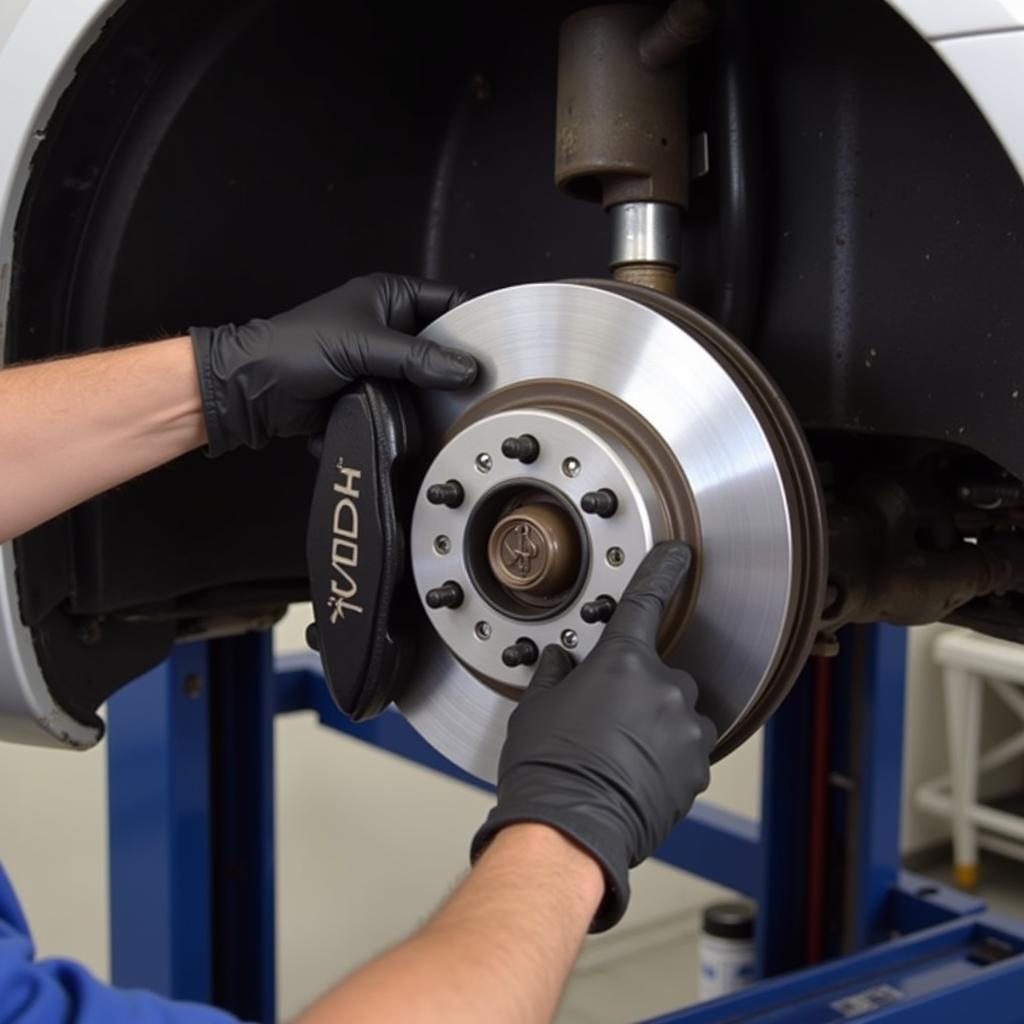Volvo is renowned for its commitment to safety, evident in its advanced driver-assistance systems. Two features often mentioned together are City Safety and Collision Warning with Auto Brake. While their names might seem interchangeable to some, understanding their distinctions is crucial for Volvo drivers. This article delves into the nuances of each system, highlighting their functionalities and benefits.
 Volvo City Safety System in Action
Volvo City Safety System in Action
Volvo City Safety: A Focus on Low-Speed Urban Environments
City Safety is a standard safety feature on all new Volvo vehicles, designed to address the challenges of urban driving. It operates at speeds up to 31 mph and primarily focuses on preventing or mitigating low-speed collisions. The system utilizes a windshield-mounted laser sensor to continuously monitor the distance to vehicles, pedestrians, cyclists, and even large animals in front of the car.
Here’s how City Safety works:
- Detection: The laser sensor scans the road ahead, detecting potential obstacles in the vehicle’s path.
- Warning: If a collision risk is detected, City Safety issues an audible warning and a flashing light on the windshield’s head-up display.
- Brake Support: If the driver doesn’t react in time, the system automatically applies the brakes, providing full braking power to help avoid or mitigate the impact.
City Safety is particularly effective in scenarios such as:
- Rear-end collisions: When the vehicle ahead brakes suddenly, and the driver is slow to react.
- Pedestrian and cyclist accidents: In urban environments where pedestrians and cyclists may cross the road unexpectedly.
- Traffic light violations: If a vehicle in front has stopped at a traffic light and the driver is distracted.
[image-2|collision-warning-with-auto-brake-activation|Collision Warning with Auto Brake Activation|A split image illustrating the system’s two-stage response:
(Left) A car approaching a stationary vehicle with the collision warning light flashing on the dashboard.
(Right) The same car with the auto brake activated, highlighted by brake lights and a visual representation of braking force.]
Collision Warning with Auto Brake: Extending Protection at Higher Speeds
While City Safety focuses on urban environments, Collision Warning with Auto Brake provides a broader safety net at higher speeds, typically above 20 mph. This system utilizes a front-facing camera and radar to monitor the road ahead.
Key features of Collision Warning with Auto Brake:
- Forward Collision Warning: This feature alerts the driver when the vehicle is approaching a slower-moving or stationary vehicle ahead too quickly. The warning typically involves audible alerts, visual cues on the dashboard or head-up display, and pre-tensioning of the seatbelts.
- Auto Brake: If the driver fails to react to the collision warning, the system can automatically apply the brakes. The intensity of braking depends on the severity of the situation and the vehicle’s speed.
Collision Warning with Auto Brake proves valuable in situations such as:
- Highway driving: Where maintaining a safe distance from the car ahead is crucial.
- Sudden braking of vehicles ahead: Providing critical seconds for the driver to react and avoid a potential rear-end collision.
“It’s crucial to remember that while these systems are incredibly advanced, they are driver assists, not substitutes for attentive driving.” – David Miller, Senior Automotive Engineer specializing in Advanced Driver Assistance Systems (ADAS)
Key Differences and Similarities: City Safety vs. Collision Warning with Auto Brake
| Feature | City Safety | Collision Warning with Auto Brake |
|---|---|---|
| Primary Sensor | Laser sensor | Camera and radar |
| Operating Speed | Up to 31 mph | Typically above 20 mph |
| Target Objects | Vehicles, pedestrians, cyclists, large animals | Primarily vehicles |
| Functionality | Primarily focuses on collision avoidance | Offers both collision warning and brake assistance |
Both systems aim to enhance safety by assisting the driver in critical situations. They are designed to work in tandem, providing a comprehensive safety net for various driving scenarios.
Conclusion: Volvo’s Multifaceted Approach to Safety
Volvo’s City Safety and Collision Warning with Auto Brake represent the brand’s dedication to automotive safety. Understanding the functionalities and limitations of each system empowers Volvo drivers to navigate roads with greater confidence. However, it’s vital to remember that these systems are designed to assist, not replace, attentive driving.

